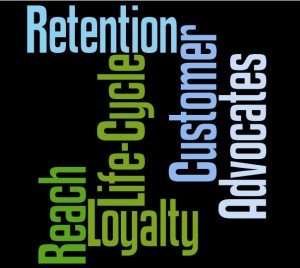Outsourcing overseas has been a growing trend for the fast-paced, emerging tech industry. Companies should consider overseas development teams to scale operations and reinforce product development, execution, and expansion. Hiring outside of the states can be beneficial in many ways, but there are several things to consider when setting up shop.
Monthly Archives: May 2014
Strategic Planning for Startups
You should start grounded
A company must first establish the mission, vision and culture before they make their first hire. A common mistake for both partnerships and startup businesses is not having these standards mapped out, identifying the essence of the ora they are trying to create. Hiring first will cause some hurdles and backpedaling to get everyone on board, which is way harder.
Founders can have slightly different opinions on where they want to take the company, but they need to strike a compromise and agreement and be consistent when communicating the mission, vision and culture on a company level. A very common issue we run into is unparallel expectations among founders. For example, if they want to sell the company, what they will sell the it for, or if they plan to IPO someday, etc. Founders really need to have an understanding on this right from the get-go as it creates a lot of dissonance when they receive an acquisition offer or even a funding offer for that matter.
You want to win the race, but need to focus on getting to the next ‘time extension’ point
I am a strong advocate of the 3 month, 1 year, 3 year strategic planning framework or variations of it and have seen that it is beneficial for startups to use this model. However, for early-stage startups, we have garnered more success using a 3 month plan with short term milestones.
One key difference between an early-stage startup and a mature corporation is that an early-stage startup is unlikely to have established strong product-market fit and has a more fluid business plan. With that in mind, more progressed companies need to be open to changing the 1 year and 3 year plan and revisit or revise strategies on a regular basis. Taking the time to reevaluate the 1 year and 3 year plan is something that startups and their boards don’t do often enough.
I thought we had someone covering this job
A big part of strategic planning that startups often neglect is figuring out staffing needs based on the business plan in advance and being proactive with onboarding staff that is needed regularly. Many startups rely on “just-in-time” hiring strategies but what they don’t realize is that this causes the machine to stop or slow down and with growth as your main goal, this is not a good position to be in.
The other aspect to strategic planning on a HR front is to figure out who is responsible for what. I totally understand that people at startups need to be a jack of all trades at times and pick up whatever work that needs to be done. I am not saying that a person should not have multiple roles, but you still need to be clear on who is ultimately responsible. A startup has very little ‘fat’ compared to a large organization (or at least that should be the case) and when accountabilities are lost, there will be a huge impact on the startup.
Founders need to recognize their own capabilities from Day 1
At a certain point in the lifecycle of the business, the founders no longer need to be responsible for wearing multiple hats. Typically somewhere between the year 1 and 3, the founders become more of delegators than executors. This means they are hiring a Head of Sales and a Head of Marketing, etc. This is also the time when it’s valuable for founders to know their own strengths. For example, a CEO of a sub-20 person startup often needs a much different skill set than a 20-100 person company or a 100+ person business. Being self aware of that helps founders grow their businesses. Alternatively, as companies scale, it allows founders to narrow their focus on what they do best. It’s important to be self aware of these factors before scaling, though, so the core values of the business and other sensitivities aren’t compromised during transition points.
Follow Karlin Ventures on Facebook and Twitter for more startup tips and business news.
Why Retention Matters
When marketing, it’s easy to get lost in the importance of customer acquisition and pay less attention to the customers that one already has. A smart business will blend the two together, spending even more energy on customer relationship management (CRM), or retention, than they do on acquisition. This is a formula for success, resulting in higher profit and not only a larger customer base, but a stronger one as well.
Why acquisition matters
Just because retention is most important doesn’t mean that acquisition doesn’t matter. Acquisition is needed to begin, maintain and grow any company. Here are just a couple of reasons why acquiring new customers is vital to any brand:

- More customers = a bigger business. The most obvious reason that acquisition is important is because any company needs new customers to survive. For this reason, acquisition is especially important to young businesses and those looking to expand their audience.
- Acquiring new customers likely means cutting into the competition. Grabbing the attention of a new audience doesn’t only mean that a company is making money off of their business, but it also probably means that their competitors are not. Eighty-nine percent of consumers begin doing business with a competitor after leaving a company due to poor customer service. That means that acquiring consumers could mean a company is snagging them from a competing brand.
Why retention matters more
While acquisition is certainly important to any business, building brand loyalty and keeping existing customers is absolutely crucial. That’s why companies like Preact and Retention Science both focus on helping businesses amp up retention rates (or “Preact” to keep their already existing clients). Here’s why:
- It costs less to maintain an already-existing customer than it does to grab the attention of a new one. While the costs behind customer retention are far more complex than the costs surrounding custom acquisition, it actually costs less to market an already-loyal consumer.
- Retention efforts simply reach farther than acquisition ones. Plain and simple, it’s easier to target an already-existing customer than it is to target a new one. The odds of making a successful sale to a loyal consumer can sit between 60% and 70%, but the chances of selling to someone new decrease to between 5% and 20%.
- Therefore, retention efforts typically make more money than acquisition ones. Not only does building brand loyalty make more money by costing less and requiring fewer resources, but also, loyal customers generally spend more money on each purchase. A new e-commerce buyer averages a checkout buy of under $25, but a returning one is likely to spend closer to $50.
So how can a company improve retention rate?
Improving retention rate takes a bit of rethinking and reshaping, but is ultimately a goal that all companies can achieve. The top three things great companies do to retain their customers are:
- Respond to customers in a timely matter. In many cases, when it comes to customer retention and satisfaction, response time matters even more than the actual response. In fact, 33% of consumers would prefer a quick response, even if it is an ineffective one. Shoot for hold times lower than three minutes and social media feedback within 60 minutes.
- Engage with your customers. Just because a customer made a purchase doesn’t mean your job is done. By engaging with them in an active way, you can drive up their brand loyalty, guaranteeing they return again and again. To engage with your customers, hold contests (both online and in person), ask for feedback through surveys and suggestions and then actually listen to the feedback and use it to shape your company’s direction.
- Customize and personalize. Customers like to feel that they’re appreciated. They want to feel like a person, not another dollar in your bank account. Plus, according to the 80/20 rule of business, 80% of your business will come from 20% of your customers. That means that it’s probably worth your time to get to know that 20% pretty well. Acknowledge them by name, throw in freebies wherever you can and never underestimate the impact of a “thank you” or a handwritten note.
By really honing in on these three skills, you have the ability to amp up retention and run a much more profitable business.
The bottom line: retention wins every time.
In an ideal world, a smart business would embrace both acquisition and retention, while placing a strong emphasis on retaining their customers. By building brand loyalty, businesses can cut back on marketing costs and resources in addition to actually drawing in a larger profit. That’s why, while acquisition is a key part of business, retention should sit at the very center of any business model.



